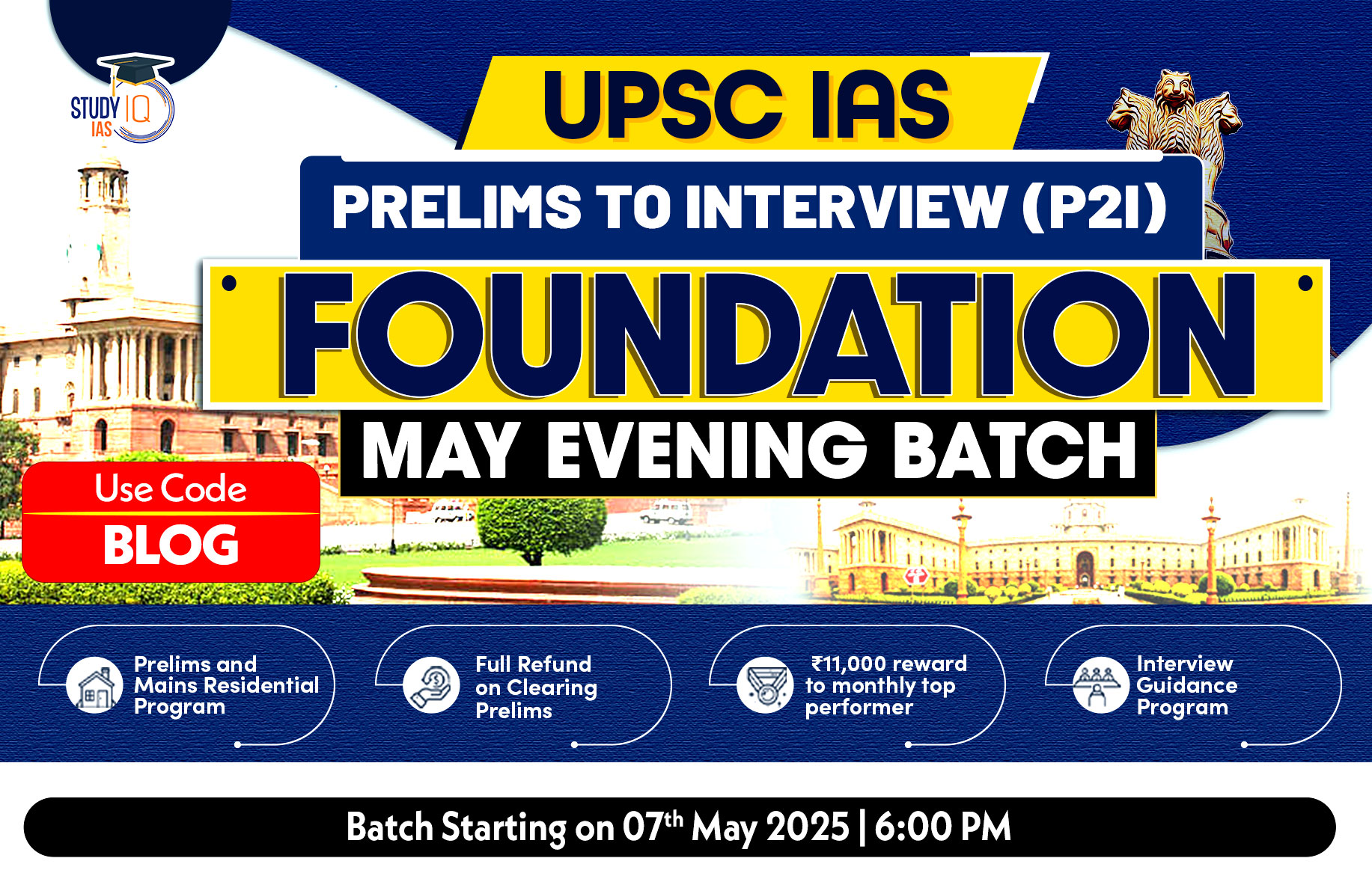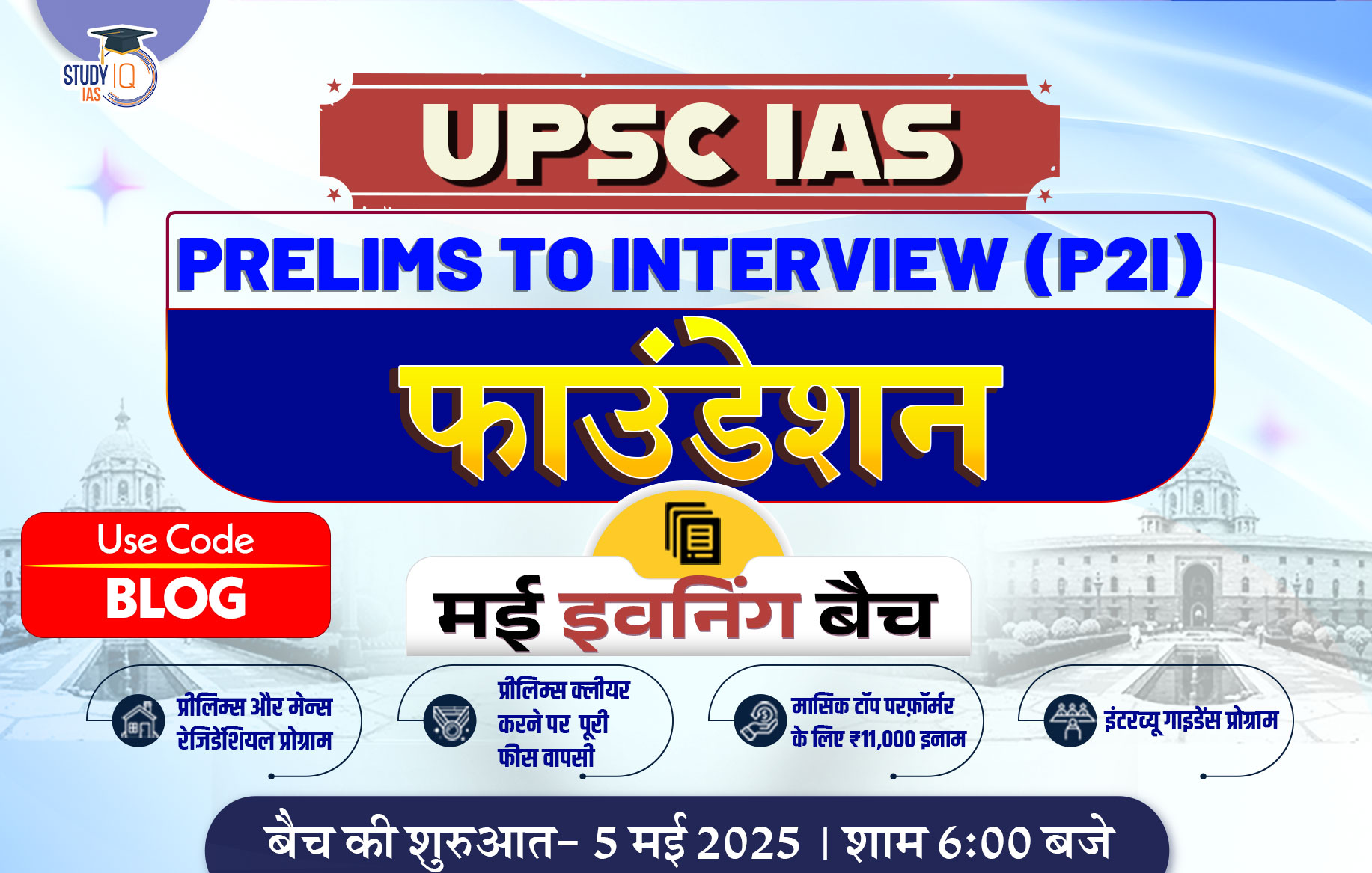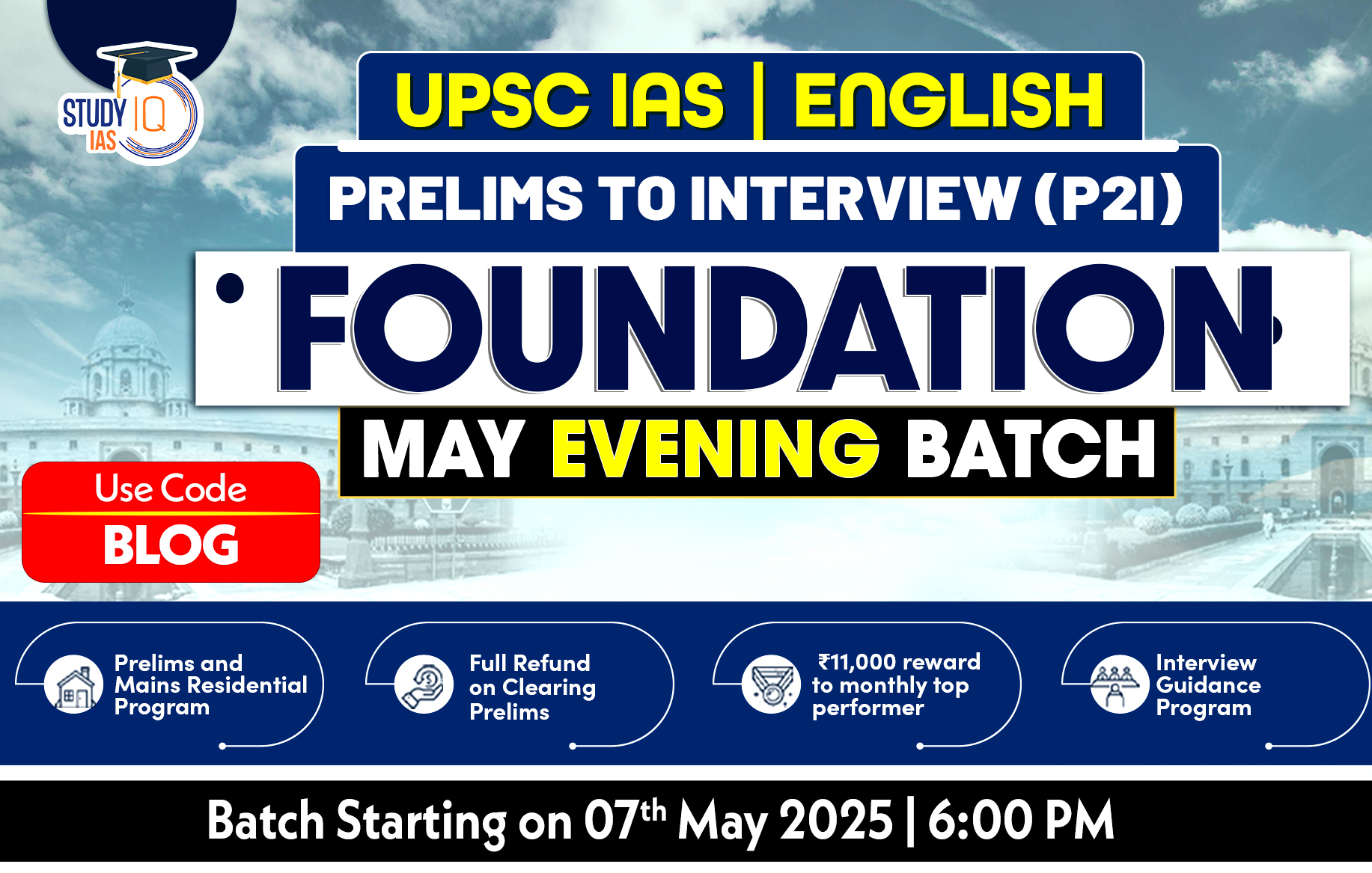Daily Quiz 26 June 2024
Quiz-summary
0 of 5 questions completed
Questions:
- 1
- 2
- 3
- 4
- 5
Information
- Click on – ‘Start Quiz’ button
- Solve Questions
- Click on ‘Next’ button
- Click on ‘Finish Quiz’ button
- Now click on ‘View Questions’ button – here you will see solutions and links.
- The test contains a total of 5 questions.
- Click on the most appropriate option to mark it as your answer.
- You will be awarded Two marks for each correct answer.
- You can change your answer by clicking on some other option.
- A Number list of all questions appears at the top side of the screen.
- You can access the questions in any order by clicking on the question number given on the number list.
- You can use rough sheets while taking the test.
- Do not use calculators, log tables, dictionaries, or any other printed/online reference material during the test.
- Do not click the button “Finish Quiz” before completing the test. A test once submitted cannot be resumed.
You have already completed the quiz before. Hence you can not start it again.
Quiz is loading...
You must sign in or sign up to start the quiz.
You have to finish following quiz, to start this quiz:
- 1
- 2
- 3
- 4
- 5
- Answered
- Review
-
Question 1 of 5
1. Question
1 pointsInitiative on Critical and Emerging Technology (iCET), recently seen in news is an initiative between India and which of the following country?
Correct
Answer: C
Explanation:
- It was announced by India and the USA on the sidelines of the Quad Summit in Tokyo in 2022.
- Launched by the National Security Advisors (NSAs) in 2023.
- Comprises key technology sectors such as space, semiconductors, advanced telecommunications, artificial intelligence, quantum, biotechnology, and clean energy.
- New areas subsequently included: biotechnology, critical minerals and rare earths processing technologies, digital connectivity and digital public infrastructure, and advanced materials.
- Progress Made So Far:
- Established the Quantum Coordination Mechanism.
- Launched a public-private dialogue (PDD) on telecommunications to drive collaboration in OpenRAN, 5G, and 6G.
- Signed a Memorandum of Understanding (MoU) on establishing a semiconductor supply chain, leading to the creation of a semiconductor sub-committee to review recommendations from an industry-led task force launched in connection with the iCET.
- Launched the India-U.S. Defence Acceleration Ecosystem (INDUS-X) to advance cutting-edge technology cooperation.
- Concluded a roadmap for ‘Defence Industrial Cooperation’ to guide the policy direction for the next few years.
- Established a Strategic Trade Dialogue to remove regulatory barriers and review existing export control norms to further strategic technology and trade collaborations envisaged under iCET.
Incorrect
Answer: C
Explanation:
- It was announced by India and the USA on the sidelines of the Quad Summit in Tokyo in 2022.
- Launched by the National Security Advisors (NSAs) in 2023.
- Comprises key technology sectors such as space, semiconductors, advanced telecommunications, artificial intelligence, quantum, biotechnology, and clean energy.
- New areas subsequently included: biotechnology, critical minerals and rare earths processing technologies, digital connectivity and digital public infrastructure, and advanced materials.
- Progress Made So Far:
- Established the Quantum Coordination Mechanism.
- Launched a public-private dialogue (PDD) on telecommunications to drive collaboration in OpenRAN, 5G, and 6G.
- Signed a Memorandum of Understanding (MoU) on establishing a semiconductor supply chain, leading to the creation of a semiconductor sub-committee to review recommendations from an industry-led task force launched in connection with the iCET.
- Launched the India-U.S. Defence Acceleration Ecosystem (INDUS-X) to advance cutting-edge technology cooperation.
- Concluded a roadmap for ‘Defence Industrial Cooperation’ to guide the policy direction for the next few years.
- Established a Strategic Trade Dialogue to remove regulatory barriers and review existing export control norms to further strategic technology and trade collaborations envisaged under iCET.
-
Question 2 of 5
2. Question
1 pointsGlobal Gender Gap index is published by:
Correct
Answer: B
Explanation:
- The World Economic Forum (WEF) publishes the Global gender Gap Index.
- The index benchmarks countries on their progress towards gender parity across four key dimensions, with sub-matrices for each dimension.
- Economic Participation and Opportunity
- Educational Attainment
- Health and Survival
- Political Empowerment
- The Global Gender Gap (GGG) index provides scores between 0 and 1 for each of the four sub-indices and the overall index, where 1 represents full gender parity and 0 represents complete disparity.
- It is the longest-standing index tracking progress towards closing gender gaps, having been established in 2006.
- Objectives:
- The index serves as a compass to track progress on relative gaps between women and men in health, education, economy, and politics.
- By using this annual measure, stakeholders within each country can set priorities relevant to their specific economic, political, and cultural contexts.
- Global Gender Gap 2024:
- The global gender gap has closed to 68.5% in 2024, up slightly from 68.4% in 2023.
- At this slow pace, achieving full parity will take 134 years, according to the World Economic Forum (WEF).
- Top- Ranked: Iceland remains the top-ranked country with 5% of its gender gap closed.
- It is the only economy to have closed over 90% of its gender gap.
- India’s Position: India has slipped to 129th out of 146 countries, down from 127th in 2023. In 2022, India was ranked 135th.
- India has closed 1% of its gender gap in 2024, indicating significant room for improvement.
- Areas of Decline for India:
- The slight regression is due to small declines in education and political empowerment.
- Education Gaps: The literacy rate gap between men and women is 17.2 percentage points. India is ranked 124th in this indicator.
- Political Empowerment: Women’s representation in Parliament remains low.
- In the newly elected Lok Sabha, women make up 13.6% of the members (74 out of 543), down from 78 in 2019.
- Economic Participation and Opportunity: India has shown slight improvement in economic participation and opportunity in recent years.
- To match its 2012 score of 46%, India needs to improve by 6.2 percentage points.
Incorrect
Answer: B
Explanation:
- The World Economic Forum (WEF) publishes the Global gender Gap Index.
- The index benchmarks countries on their progress towards gender parity across four key dimensions, with sub-matrices for each dimension.
- Economic Participation and Opportunity
- Educational Attainment
- Health and Survival
- Political Empowerment
- The Global Gender Gap (GGG) index provides scores between 0 and 1 for each of the four sub-indices and the overall index, where 1 represents full gender parity and 0 represents complete disparity.
- It is the longest-standing index tracking progress towards closing gender gaps, having been established in 2006.
- Objectives:
- The index serves as a compass to track progress on relative gaps between women and men in health, education, economy, and politics.
- By using this annual measure, stakeholders within each country can set priorities relevant to their specific economic, political, and cultural contexts.
- Global Gender Gap 2024:
- The global gender gap has closed to 68.5% in 2024, up slightly from 68.4% in 2023.
- At this slow pace, achieving full parity will take 134 years, according to the World Economic Forum (WEF).
- Top- Ranked: Iceland remains the top-ranked country with 5% of its gender gap closed.
- It is the only economy to have closed over 90% of its gender gap.
- India’s Position: India has slipped to 129th out of 146 countries, down from 127th in 2023. In 2022, India was ranked 135th.
- India has closed 1% of its gender gap in 2024, indicating significant room for improvement.
- Areas of Decline for India:
- The slight regression is due to small declines in education and political empowerment.
- Education Gaps: The literacy rate gap between men and women is 17.2 percentage points. India is ranked 124th in this indicator.
- Political Empowerment: Women’s representation in Parliament remains low.
- In the newly elected Lok Sabha, women make up 13.6% of the members (74 out of 543), down from 78 in 2019.
- Economic Participation and Opportunity: India has shown slight improvement in economic participation and opportunity in recent years.
- To match its 2012 score of 46%, India needs to improve by 6.2 percentage points.
-
Question 3 of 5
3. Question
1 pointsConsider the following statements regarding Ethanol:
- It increases neurotransmission levels in the human body.
- It is metabolised in the liver and stomach by alcohol dehydrogenase (ADH) enzymes into acetaldehyde.
Which of the statement(s) given above is/are correct?
Correct
Answer: B
Explanation:
- Statement 1 is Incorrect: Ethanol (C2H5OH) consists of a carbon atom bonded to three hydrogen atoms and another carbon atom, which is bonded to two hydrogen atoms and a hydroxyl group (OH–).
- The primary alcohol in these beverages is ethanol, a psychoactive drug that lowers neurotransmission levels in the body, causing intoxication.
- Statement 2 is Correct: Ethanol is metabolised in the liver and stomach by alcohol dehydrogenase (ADH) enzymes into acetaldehyde, which is then converted to acetate byaldehyde dehydrogenase (ALDH) enzyme
- The adverse effects of alcohol consumption, from hangovers to cancer, are due to acetaldehyde.
- Despite its widespread recreational use, the World Health Organization (WHO) states that no level of ethanol consumption is safe for health.
- Long-term use can lead to dependence, increase the risk of cancers and heart disease, and potentially result in death.
Incorrect
Answer: B
Explanation:
- Statement 1 is Incorrect: Ethanol (C2H5OH) consists of a carbon atom bonded to three hydrogen atoms and another carbon atom, which is bonded to two hydrogen atoms and a hydroxyl group (OH–).
- The primary alcohol in these beverages is ethanol, a psychoactive drug that lowers neurotransmission levels in the body, causing intoxication.
- Statement 2 is Correct: Ethanol is metabolised in the liver and stomach by alcohol dehydrogenase (ADH) enzymes into acetaldehyde, which is then converted to acetate byaldehyde dehydrogenase (ALDH) enzyme
- The adverse effects of alcohol consumption, from hangovers to cancer, are due to acetaldehyde.
- Despite its widespread recreational use, the World Health Organization (WHO) states that no level of ethanol consumption is safe for health.
- Long-term use can lead to dependence, increase the risk of cancers and heart disease, and potentially result in death.
-
Question 4 of 5
4. Question
1 pointsConsider the following statements related to pro tem Speaker:
- His/her primary role is to appoint the Speaker.
- The post of pro tem Speaker ismentioned in the article 99 of Indian Constitution.
Which of the statement(s) given above is/are correct?
Correct
Answer: B
Explanation:
- Statement 1 is inCorrect: The pro-tem Speaker is a temporary presiding officer in the Lok Sabha until the regular Speaker is elected. The term ‘pro-tem’ means ‘for the time being’ or ‘temporarily’.
- The primary role of the pro-tem Speaker is to administer the oath to new Members of Parliament (MPs) as per Article 99 of the Constitution and facilitate the election of the new Speaker.
- Statement 2 is Incorrect: The post of pro-tem Speaker is not explicitly mentioned in the Constitution but is outlined in the ‘Handbook on the Working of the Ministry of Parliamentary Affairs’.
- Article 95(1): While the office of Speaker is vacant; the duties of the office shall be performed by the Deputy Speaker or, if the office of Deputy Speaker is also vacant, by such a member of the House of the People as the President may appoint for the purpose.
Incorrect
Answer: B
Explanation:
- Statement 1 is inCorrect: The pro-tem Speaker is a temporary presiding officer in the Lok Sabha until the regular Speaker is elected. The term ‘pro-tem’ means ‘for the time being’ or ‘temporarily’.
- The primary role of the pro-tem Speaker is to administer the oath to new Members of Parliament (MPs) as per Article 99 of the Constitution and facilitate the election of the new Speaker.
- Statement 2 is Incorrect: The post of pro-tem Speaker is not explicitly mentioned in the Constitution but is outlined in the ‘Handbook on the Working of the Ministry of Parliamentary Affairs’.
- Article 95(1): While the office of Speaker is vacant; the duties of the office shall be performed by the Deputy Speaker or, if the office of Deputy Speaker is also vacant, by such a member of the House of the People as the President may appoint for the purpose.
-
Question 5 of 5
5. Question
1 pointsConsider the following statements about National Forensic Infrastructure Enhancement Scheme:
- It is a central sector scheme that aims to bolster forensic capabilities nationally through modern infrastructure and skilled manpower.
- The scheme will be in effect for 3 years.
- The scheme will be operated by the Ministry of Science and Technology.
How many of the statements above are not correct?
Correct
Answer: B
Explanation:
- Statement 1 is Correct: TheNational Forensic Infrastructure Enhancement Scheme is a Central Sector Scheme.
- Aim:
- To bolster forensiccapabilities nationally through modern infrastructure and skilled manpower for the scientific investigation of crimes.
- Supports the implementation of new criminal laws: Bharatiya Nyaya Sanhita, 2023, Bharatiya Nagarik Suraksha Sanhita, 2023, and Bharatiya Sakshya Adhiniyam, 2023, effective from 1 July 2024.
- Forensic investigation is mandated for criminal cases with potential imprisonment of seven years or more, increasing the demand on forensic services.
- Financial Outlay: The central government allocated Rs 2254.43 crore for the scheme, sourced from the budgetary allocation of the Union Ministry of Home Affairs.
- Aim:
- Statement 2 is Incorrect: The scheme will be in effect for 5 years, from 2024-25 to 2028-29.
- Statement 3 is Incorrect: The scheme will be operated by the Union Ministry of Home Affairs.
- Components of NFIES:
- Construction of Campuses: Building campuses of the National Forensic Sciences University (NFSU) across the country.
- Establishment of Laboratories: Setting up Central Forensic Science Laboratories nationwide.
- Strengthening Existing Infrastructure: Enhancing the infrastructure of the Delhi Campus of NFSU.
- Expected Outcomes:
- Construction of new NFSU off-campuses and Central Forensic Science Laboratories (CFSLs).
- Alleviate the shortage of trained forensic professionals.
- Reduce the caseload and pendency in forensic laboratories.
- Components of NFIES:
Assist in achieving the government’s goal of a high conviction rate exceeding 90%.
Incorrect
Answer: B
Explanation:
- Statement 1 is Correct: TheNational Forensic Infrastructure Enhancement Scheme is a Central Sector Scheme.
- Aim:
- To bolster forensiccapabilities nationally through modern infrastructure and skilled manpower for the scientific investigation of crimes.
- Supports the implementation of new criminal laws: Bharatiya Nyaya Sanhita, 2023, Bharatiya Nagarik Suraksha Sanhita, 2023, and Bharatiya Sakshya Adhiniyam, 2023, effective from 1 July 2024.
- Forensic investigation is mandated for criminal cases with potential imprisonment of seven years or more, increasing the demand on forensic services.
- Financial Outlay: The central government allocated Rs 2254.43 crore for the scheme, sourced from the budgetary allocation of the Union Ministry of Home Affairs.
- Aim:
- Statement 2 is Incorrect: The scheme will be in effect for 5 years, from 2024-25 to 2028-29.
- Statement 3 is Incorrect: The scheme will be operated by the Union Ministry of Home Affairs.
- Components of NFIES:
- Construction of Campuses: Building campuses of the National Forensic Sciences University (NFSU) across the country.
- Establishment of Laboratories: Setting up Central Forensic Science Laboratories nationwide.
- Strengthening Existing Infrastructure: Enhancing the infrastructure of the Delhi Campus of NFSU.
- Expected Outcomes:
- Construction of new NFSU off-campuses and Central Forensic Science Laboratories (CFSLs).
- Alleviate the shortage of trained forensic professionals.
- Reduce the caseload and pendency in forensic laboratories.
- Components of NFIES:
Assist in achieving the government’s goal of a high conviction rate exceeding 90%.
Results
0 of 5 questions answered correctly
Your time:
Time has elapsed
You have reached 0 of 0 points, (0)
| Average score |
|
| Your score |
|
Categories
- Not categorized 0%
| Pos. | Name | Entered on | Points | Result |
|---|---|---|---|---|
| Table is loading | ||||
| No data available | ||||
Sharing is caring!

 Daily Quiz 29 April 2025
Daily Quiz 29 April 2025





















